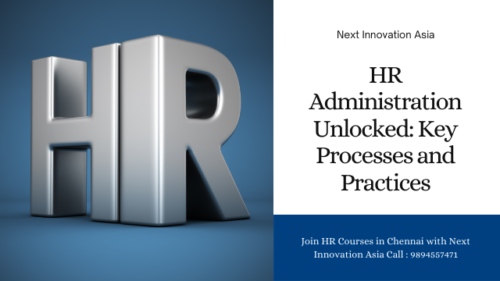Introduction
In today’s dynamic business environment, effective HR administration is crucial for organizational success. This guide explores the key processes and practices that empower HR professionals to manage human resources efficiently, ensuring alignment with organizational goals and fostering a positive workplace culture.
1. Recruitment and Selection
- Job Analysis: Understanding the skills, qualifications, and responsibilities required for each position.
- Sourcing Candidates: Utilizing various channels such as job boards, social media, and employee referrals to attract top talent.
- Interviewing: Implementing structured interviews to evaluate candidates’ skills and cultural fit.
- Onboarding: Developing a comprehensive onboarding program that integrates new hires into the organization smoothly.
2. Employee Record Management
- Data Management: Maintaining accurate and up-to-date employee records, including personal information, job history, and performance evaluations.
- Confidentiality and Compliance: Ensuring that employee data is stored securely and in compliance with legal regulations (e.g., GDPR, HIPAA).
- Accessibility: Implementing an efficient system for easy access to employee records for authorized personnel.
3. Performance Management
- Goal Setting: Collaborating with employees to set measurable and achievable performance goals.
- Continuous Feedback: Encouraging ongoing communication between managers and employees to foster growth and development.
- Performance Reviews: Conducting regular performance evaluations to assess employee progress and identify areas for improvement.
4. Training and Development
- Needs Assessment: Identifying skill gaps and training needs within the organization.
- Training Programs: Designing and implementing training initiatives that enhance employee skills and knowledge.
- Career Development: Offering mentorship programs and career path planning to support employee growth.
5. Compensation and Benefits Administration
- Salary Structure: Developing a competitive salary structure that aligns with industry standards and attracts talent.
- Benefits Packages: Providing a comprehensive benefits package that includes health insurance, retirement plans, and other perks.
- Payroll Management: Ensuring accurate and timely payroll processing, including deductions and tax compliance.
6. Employee Relations
- Conflict Resolution: Establishing a clear process for addressing employee grievances and resolving conflicts.
- Engagement Initiatives: Implementing programs to enhance employee engagement and satisfaction.
- Exit Interviews: Conducting exit interviews to gather feedback from departing employees and identify areas for improvement.
7. Compliance and Risk Management
- Regulatory Compliance: Staying informed about labor laws and regulations to ensure organizational compliance.
- Policy Development: Creating clear HR policies that outline organizational expectations and procedures.
- Risk Assessment: Identifying potential HR-related risks and implementing strategies to mitigate them.
Conclusion
Effective HR administration is essential for cultivating a productive and engaged workforce. By mastering key processes and practices, HR professionals can unlock the potential of their organizations, ensuring alignment with strategic goals and fostering a positive workplace culture. Embracing these practices not only enhances operational efficiency but also contributes to long-term organizational success.
“Ready to excel in HR? Unlock your potential with certified training and job support at Next Innovation Asia. Join us today!”

